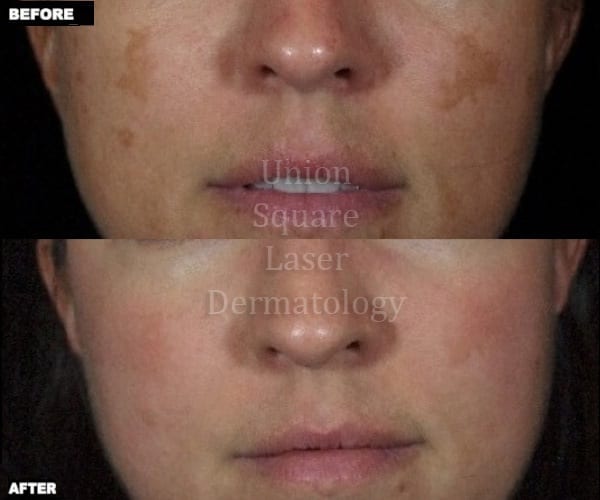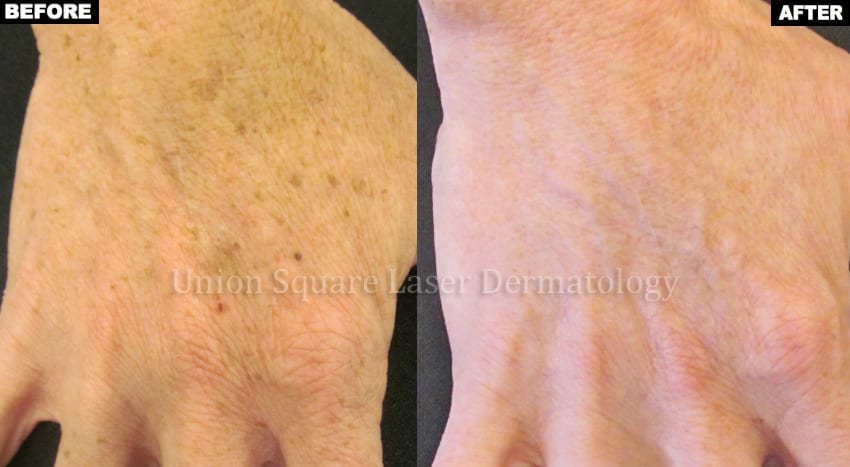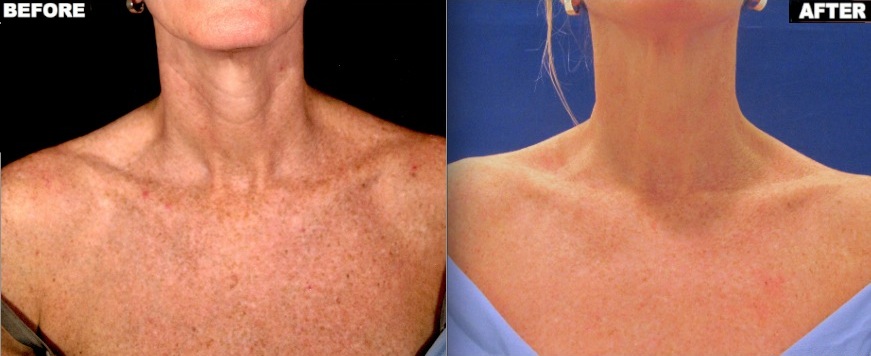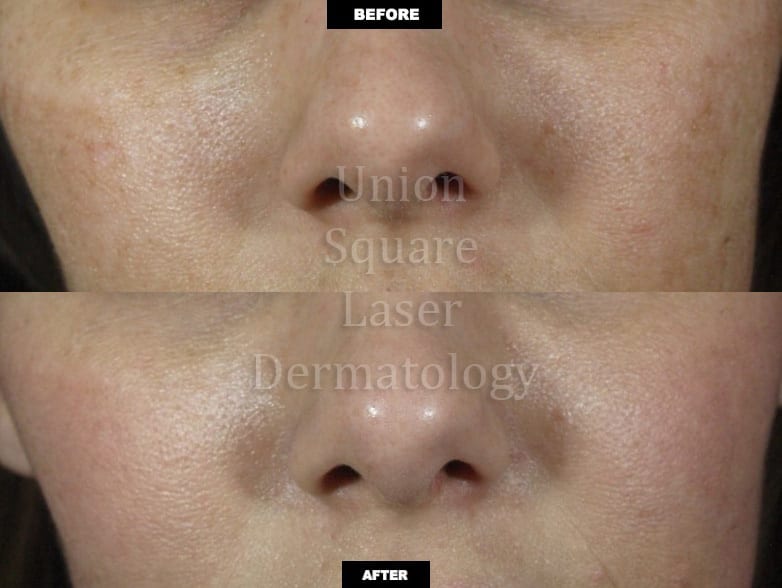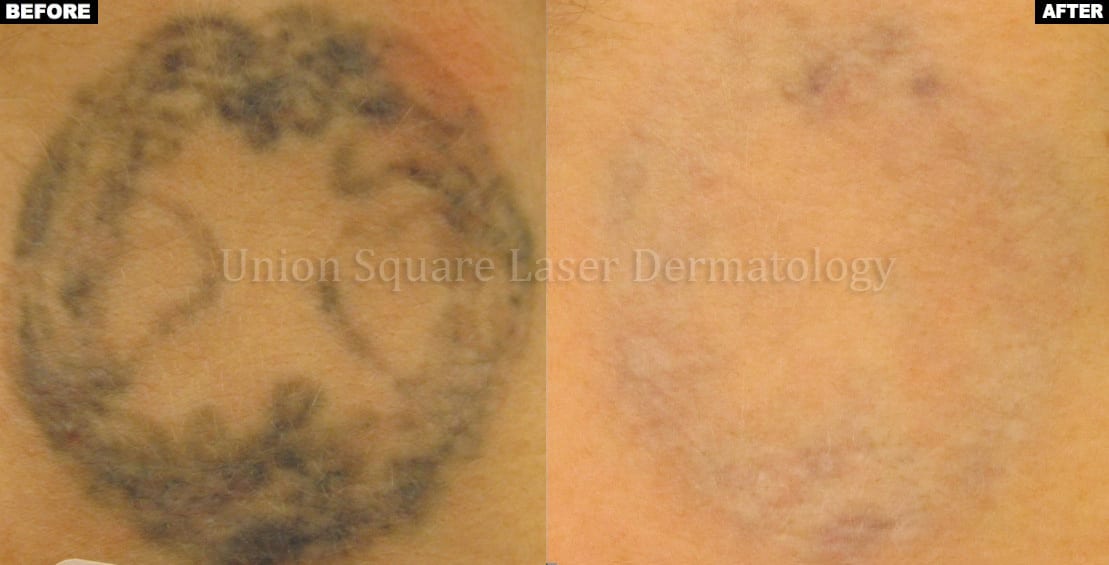Types: Alex TriVantage laser, Nd:Yag laser, KTP laser, Fraxel (re:store dual)™
Lasers are chosen to selectively target pigment in the skin and leave a small scab on the skin surface to stimulate pigment removal. The settings of the laser and the treatment protocol are calibrated to achieve a good cosmetic result while avoiding skin discoloration. Dr. Chapas and Dr. MacGregor have extensive experience in using these lasers for treatment of sun spots, tattoos, Nevus of Ota, pigmented birthmarks, melasma and other types of pigmented lesions.
In the video below, you can watch Dr. Chapas explain and demonstrate sun spot removal with the Fraxel (re:store dual)™ laser on the Rachael Ray show.
Pigmented Lesion treatment (brown spots, age spots, melasma, birthmarks, tattoos) with Lasers
Melanocytic nevi such as Nevus of Ota are typically treatable with our nd:YAG and Alex Trivantage lasers. Melasma is typically treatable with our Fraxel Restore Dual laser. Brown spots and age spots are typically treatable with our Alex Trivantage and Fraxel Restore Dual lasers.
Laser tattoo removal utilizes selective photothermolysis (SPTL) for the selective destruction of tattoo pigments. Success depends on four factors:
-
- 1. The color of the light must penetrate sufficiently deep into the skin to reach the tattoo pigment.
-
- 2. The color of the laser light must be highly absorbed by the tattoo pigment compared to the surrounding skin. Different tattoo pigments therefore require different laser colors. For example, red light is highly absorbed by green tattoo pigments.
-
- 3. The pulse duration of the laser energy must be very short, so that the tattoo pigment is destroyed before heat can adversely affect the surrounding skin. Heating of the surrounding tissue can cause burns or scars.
-
- 4. Sufficient energy must be delivered during each laser pulse to heat the pigment to fragmentation. If the energy is too low, pigment will not fragment and no removal will take place.
Q-switched lasers such as the Alex Trivantage are the only currently available commercially available devices that can meet these four requirements.


